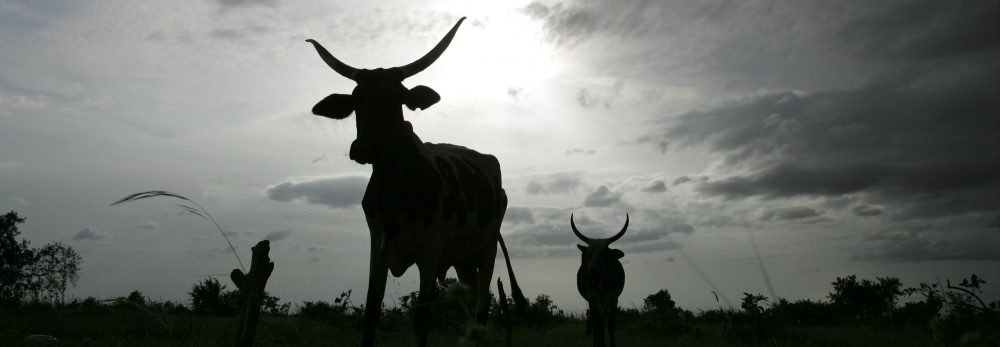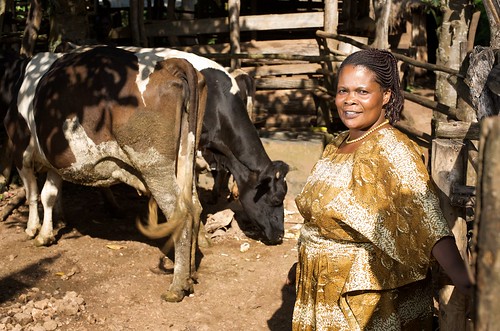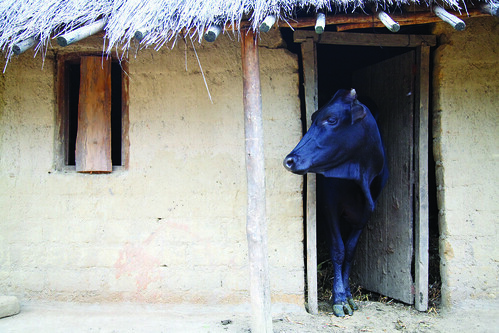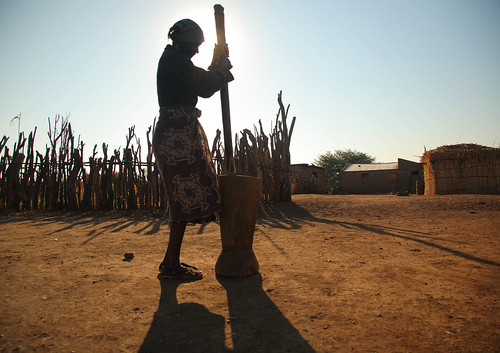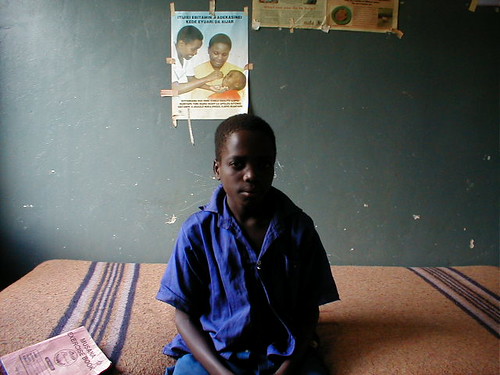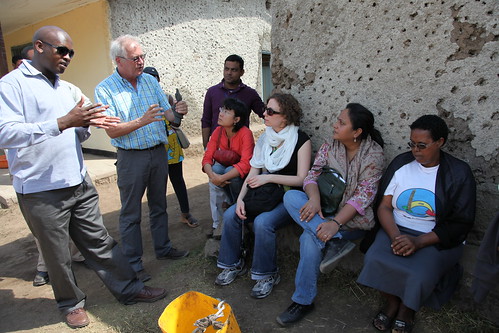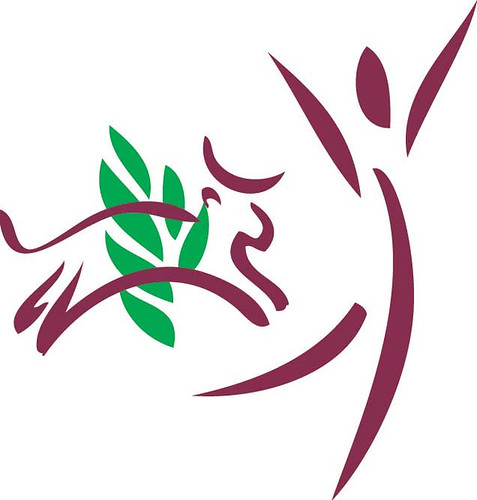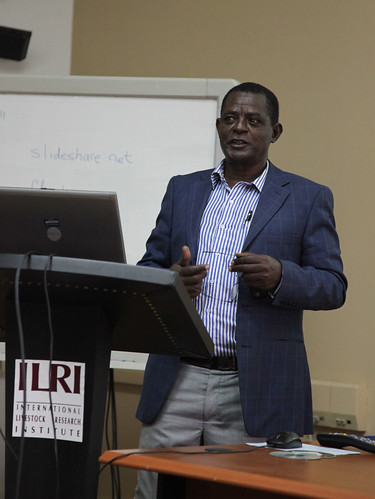A small-scale dairy farmer with her cows in Uganda. A new three-year project will identify and make available appropriate dairy cows for smallholders in East Africa to help them increase their milk yields (photo credit: EADD).
A new project identifying appropriate dairy breeds for small-scale farmers in East Africa, and making these breeds more available in the region, was launched in February 2011 at the Nairobi campus of the International Livestock Research Institute (ILRI). The Dairy Genetics East Africa project—a partnership between ILRI; the University of New England, in Australia; and PICOTEAM, a consultancy group facilitating change processes—will help smallholders obtain the most appropriate cows for their farms so as to increase their milk yields and improve their livelihoods.
Speaking to dairy stakeholders from Kenya, including officials from Kenya’s Ministry of Livestock Development, the East Africa Dairy Development (EADD) project and other dairy industry development partners, at the launch on 9 February 2011, Okeyo Mwai, a researcher and the project’s coordinator at ILRI, explained that even though smallholder dairying is booming in parts of East Africa, such as in Kenya’s central region and the north and southern Rift Valley areas, where farmers have adopted improved animal breeds and intensified milk production, many more smallholders lack research-based knowledge about which dairy breeds are best suited for their farms and production systems and information about where to obtain them. According to Mwai, ‘Kenya’s dairy sector currently does not have a clear “breeding strategy.”’ That means that many poor smallholders are unable to take advantage of breeds that best suit their situations.
In the absence of appropriate breeding strategies and the ready supply of appropriate replacement stock, farmers face an unpredictable, unreliable and often costly replacement processes. Many are forced to replace their animals from their existing animals or from their neighbours. Others go to large-scale commercial farms and end up ‘upgrading’ to the main commercial dairy breeds even where these don’t suit their farms.
This project will determine the breed composition of cows currently kept in the project areas, the breeds smallholders prefer and the reasons for their preferences, and which breeds perform best under specific conditions. ‘This information will help us assess the relative fit of the various breeds to different production systems,’ says Ed Rege, a team leader at PICO. ‘We’ll then develop partnerships and business models with the private sector to breed, multiply and continuously supply the best-performing dairy breeds to farmers at affordable prices.’
The project will be implemented in five sites in western Kenya and three sites in Uganda. The first phase of the project will start with gathering information to assess the relative performance of breeds in the sites, setting up partnerships with other stakeholders in dairy development in the region and developing business models that will be carried out the later (phase 2 and 3) stages of the project.
In the first phase, project staff will collect information on about 3000 cows based on two monthly farm visits made over a period of 18 months. Field agents will compile information on the performance of the cows vis-vis farm-level inputs for a cost-benefit analysis of the different breeds. The agents will also collect information on farmer-perceived risks associated with different breeds, on means of livelihoods of the farmers, on any gender-specific preferences for certain breeds, and on farmer use of the various breeding services available and their costs.
The breed compositions will be obtained using advanced genotyping technology, which will be led by John Gibson, the project’s principal investigator, who is based at Australia’s University of New England. This information will be combined with cow and household data to identify the most appropriate breeds for various dairy production systems and household circumstances.
‘This project will harness the diverse expertise of the key partners, and combine the latest technologies with tried and tested methods of engaging with the community, to answer critical questions much more rapidly and accurately than has been possible in the past,’ said Gibson, who formerly worked at ILRI as a livestock geneticist.
Participants in the meeting expressed their support for the project, noting its focus on cattle genetic improvement—an area that has received inadequate research attention in the region. Alex Kirui, country director of the non-governmental organization Heifer International, said the project’s focus on ‘giving farmers the right breed for given circumstances’ is an essential requirement if the dairy industry is to be competitive enough to meet the high and increasing regional demand for fresh milk and other dairy products. Moses Nyabila, regional director for the East Africa Dairy Development Project, said the project would ‘unlock the value of the cow, which is a key asset for smallholder farmers.’
Results from the project’s first phase will guide future dairy pilot studies in East Africa and will inform a comparative study of the South Asian dairy industry.
The project is funded by the Bill and Melinda Gates Foundation. It started in September 2010 and is scheduled to end early in 2013.
—
For more information visit: https://www.ilri.org/node/598
